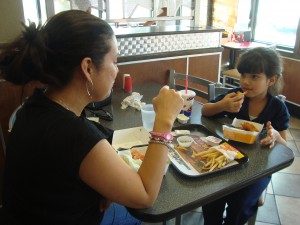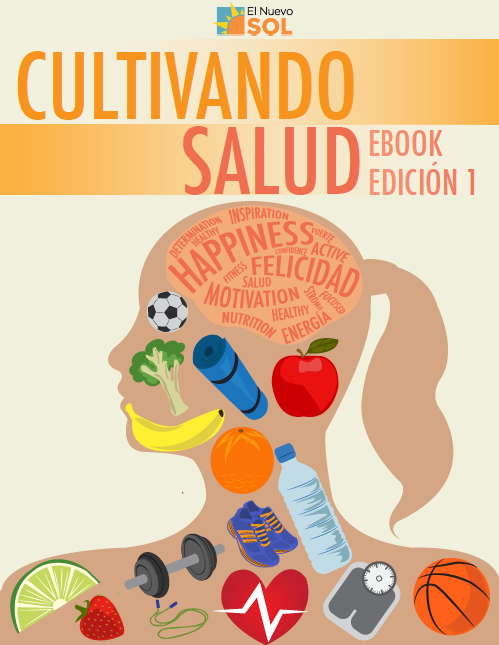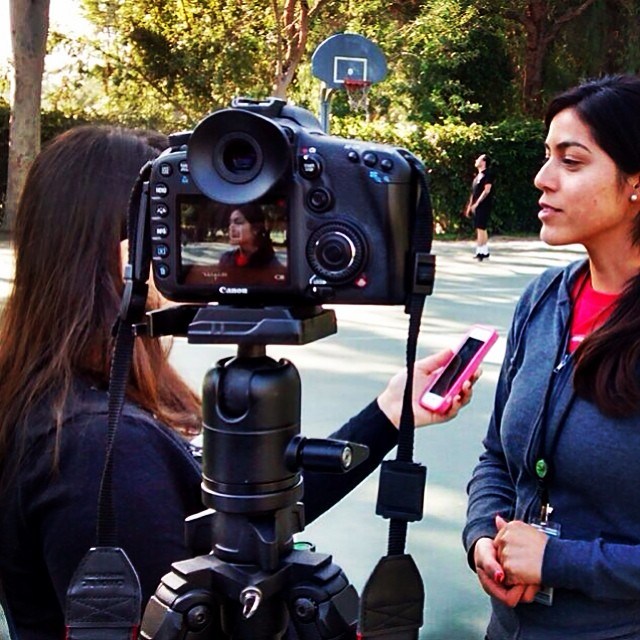By Martha Maciel
EL NUEVO SOL
En español
A simple breakfast that consist of organic eggs and fresh seasonal fruits is not the typical breakfast that children in low-income communities eat. Instead their breakfast might consist of sugary cookies or sugary cereal with whole milk and if lucky they might eat fruits, but unfortunately not the fruit that is in season but rather fruit that contains chemicals for it to maintain life throughout the whole year. Many parents don’t see what their children eat as they might be already working by the time their children are eating breakfast and getting ready to go to school or parents, themselves, might just make them that type of breakfast because it’s fast and easy.
Unfortunately, breakfast is not the only quick made food that children eat, especially those whose both parents work and don’t have time to cook a healthy meal or don’t have easy access to nutritious foods. Fast-food restaurants have target these types of families and have place themselves close to schools where children and the youth find it not tempting to ask their parents to buy them food. The correlation of the distance of fast-food restaurants located near schools have impacted the health of students. In a study released by the American Association of Wine Economists, showed that “the presence of a fast-food restaurant within a tenth of a mile of a school is associated with at least a 5.2 percent increase in the obesity rate in that school.”
For Yolanda Vengard, a full-time employee and mother of three children, says it is difficult to cook for her children considering the fact that she works but says she tries to organize herself to be more efficient.
“I cook at nights to have the food ready the next day,” said Vengard.
Even though she tries to cook nutritious foods like fresh meats and fresh fish, her children still sometimes ask to go to fast-food restaurants but she is still hesitant in taking them and only takes them to those restaurants once a month.
“I do think that fast-food is not a good idea because it has a lot of calories and you don’t know exactly what you’re eating. I also don’t know if the kitchen is clean or not or if the people inside the kitchen are clean. I prefer to eat at home because you know what you’re cooking and you will also know how old the meat is.”
Fast food, as it appears in the research Fast Food: Oppression Through Poor Nutrition, is defined as “designed for ready availability, use or consumption with little consideration given to quality or significance.”
Vengard is part of the victimization of food oppression that exists in low-income communities in which more Latino and African American families are affected.
“Certainly the fast-food restaurants are targeting those that have lesser income because it’s cheap and it’s abundant and that in itself makes it difficult to counter with healthier choices because usually if you try to buy more fruits and vegetables which is what we’re trying to get children and everyone to eat,” said Professor Kole, who teaches in the Family & Consumer Sciences Department at California State University, Northridge.
Kole added that it’s easy for children to eat junk food when they see their friends eating that and said that unfortunately we’re not starting nutrition education early enough and there are not enough parents at home who can prepare healthy lunches and breakfasts before their kids go off to school.
To offer an alternative in unhealthy lunches provided at schools and to educate students and their parents about how they can access healthier foods, Farm to School, a program that provides students with farm-fresh and locally grown food choices, educates and helps students understand where their food comes from and the importance of supporting their local community.
“The idea behind Farm to School is to accomplish two things. One is to get fresher healthier foods into schools, or at least more locally grown food and second is to use schools as a market for small producers to sell their products,” said Megan Bomba, Project Coordinator of the Healthy School Coalition at the Urban Environmental Policy Institute (UEPI). UEPI also serves as an umbrella for other food justice related programs which also includes Farm to SChool.
The Farm to School program exists in more than one thousand schools in California and has facilitated education about nutrition, food and agriculture in and out of the classroom.
Stephanie Silva, a mother of one child, says that she tries to educate her five-year-old son about the healthy foods and generally eats fast food on weekends.
“He likes pizza so he’ll ask for it, but it’ll be on the weekend and or if we are out and we’re not home for dinner time then that would be something we would eat. I really don’t like to buy him cheeseburgers or chicken nuggets because I don’t think the meat is good so I usually don’t buy that for him,” said Silva, who is a full-time student and part-time employee.
According to the research The Effect of Fast Food Restaurants on Obesity “increases in the supply of fast food restaurants have a significant effect on obesity, at least in some groups.”
Kole says that children should exercise more often and that schools should implement more physical education classes and feels other’s should create more conscious about nutrition.
“Healthy foods are a little bit more expensive so that’s something we’re trying to overcome. There are a lot of ways that we can try to do this because there is Farmer’s Market, we can buy locally grown, so that we can hopefully encourage people to buy more fruits and vegetables,” concluded Kole.
Tags: Education food justice health Martha Maciel



















